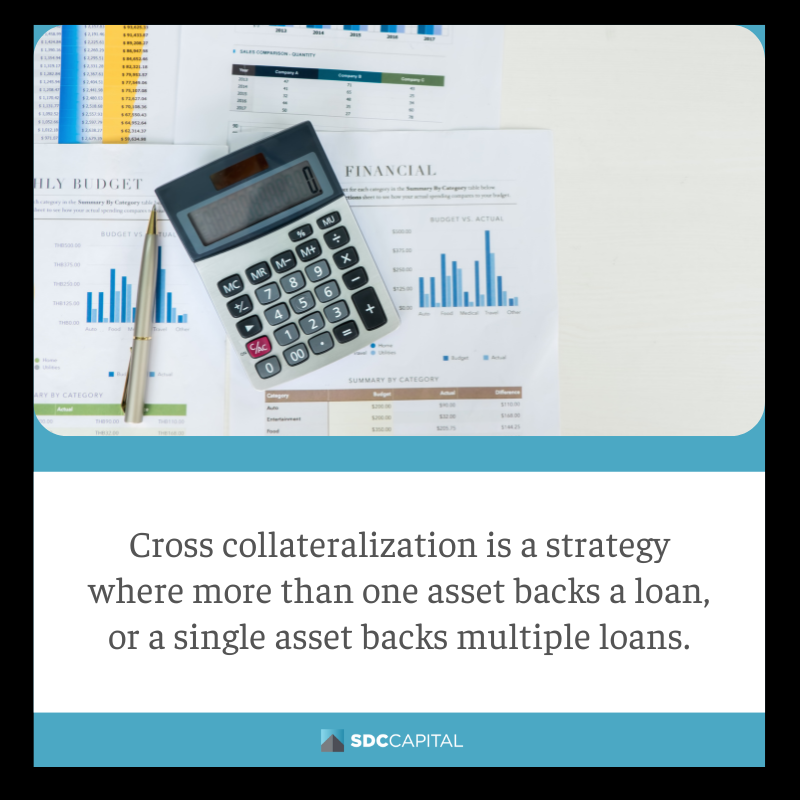When securing financing, most people think of pledging one asset as collateral for one loan. But what if you could buy your next property without selling (or even refinancing) the first one?
In this situation, you could take advantage of cross collateralization.
Cross collateralization is a strategy where more than one asset backs a loan, or a single asset backs multiple loans. This approach can unlock higher borrowing power, faster approvals, and flexible terms.
However, it also comes with unique considerations.
In this article, we’ll break down what cross collateralization means, when it’s used, how it works in mortgage lending, and the key benefits it can offer.
What is Cross Collateralization?
As mentioned above, cross collateralization is when a lender uses multiple assets to secure a single loan, or uses one asset as collateral for more than one loan.
For example:
You’re purchasing an apartment building in Los Angeles and use both the new property and an existing duplex you own in San Diego as collateral.
You have a commercial loan and a bridge loan, both secured by the same property in Orange County.
This arrangement gives lenders more security, making them more willing to offer larger loans or more favorable terms.
Scenarios Where You Can Use Cross Collateralization
Cross collateralization is a versatile financing tool that can be applied in several real-world situations. Here are some common scenarios where borrowers can use this model:
1. Real Estate Investing
Investors often need substantial capital to acquire new properties—especially in competitive areas like Los Angeles, San Francisco, or San Diego.
By using the equity in multiple properties, you can secure a larger loan without having to liquidate existing assets.
This strategy is ideal when:
You own several income-producing rentals and want to leverage their combined value for your next acquisition.
You’re expanding your portfolio quickly and need a higher loan amount than one property alone can support.
2. Debt Consolidation
If you have multiple loans with different interest rates, repayment schedules, and lenders, cross collateralization can help consolidate them into a single loan secured by one or more assets.
Benefits of cross collateralized loans include:
A single, streamlined monthly payment.
The potential for a lower overall interest rate.
Easier management of debt obligations, reducing the risk of missed payments.
3. Bridge Loans
A common use for cross collateralization in California is during property transitions. For example, if you’ve found your dream home or a promising investment but haven’t yet sold your current property, a lender can use both properties as collateral to fund the purchase.
This helps you:
Avoid losing out on a property due to financing delays.
Access short-term capital while waiting for the sale of your existing property.
Bridge the gap without having to rush your current sale.
Cross Collateralized Loans in Mortgage Lending
Hard money lenders in California like SDC Capital are often more open to cross collateralized arrangements than traditional banks, because they focus on asset value rather than strict income or credit requirements.
Take a look at one of our recently funded deals in Beaumont, California. In this deal, we were able to provide 100% of the purchase price, requiring no cash to close.
We structured the loan through cross-collateralization, so the loan was secured not only by the new acquisition but also by several other properties already owned by the borrower.
4 Benefits of Cross Collateralization
In California’s high-value real estate market, cross collateralized loans can give borrowers a competitive edge.
Based on our experience funding these loans across California, here are the advantages our borrowers often see.
1. Access to Higher Loan Amounts
By leveraging the combined equity of multiple properties, you can qualify for a larger loan than you could with just one asset.
This is especially valuable in areas where property prices are high and competitive offers often require substantial funding.
2. Speed to Close
Traditional lenders may take weeks—or even months—to approve financing. In contrast, hard money lenders offering cross collateralized loans can often close in as little as 7–10 days.
This speed can be the difference between securing a deal and losing it to a faster buyer.
3. Flexible Approval Criteria
Because cross collateralized loans are asset-based, your approval hinges more on the value of the properties than on strict credit scores or income documentation.
This makes them a viable option for borrowers who might not meet conventional lending standards but have strong equity positions.
4. Simplified Loan Management
When multiple properties are consolidated under one loan, you reduce the complexity of juggling different payment dates, terms, and interest rates.
One loan means one payment schedule. This makes financial tracking and cash flow management much easier.
At SDC Capital, we specialize in fast, flexible cross-collateralized loans throughout California. Whether you’re buying, refinancing, or bridging between properties, our team can structure a loan that works for your timeline and goals. Contact us today to discuss your options.


